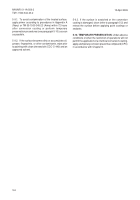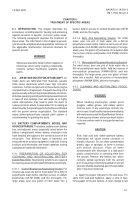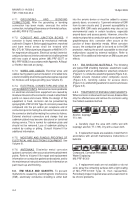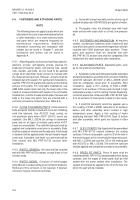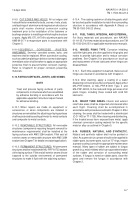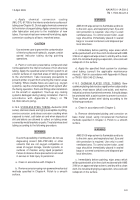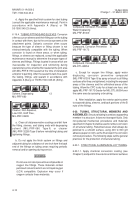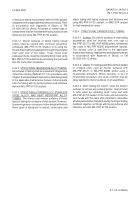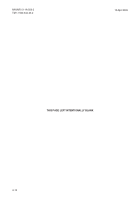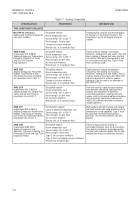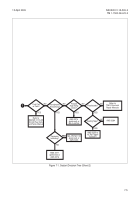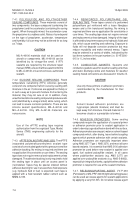TM-1-1500-344-23-2 - Page 114 of 240
6-10
NAVAIR 01-1A-509-2
TM 1-1500-344-23-2
15 April 2009
d. Apply the specified finish system for steel tubing
(consult the applicable maintenance manual). Paint in
accordance with Appendix A (Navy) or TM
55-1500-345-23 (Army).
6-19.4. TUBING FITTINGS AND SLEEVES. Corrosion
often occurs on sleeves and their fittings or on the tubing
in contact with them, due to the crevices present at the
attachment points. Galvanic corrosion often occurs
because the type of sleeve or fitting chosen is not
electrochemically compatible with the tubing. When
corrosion is found on these areas, or when tubing,
fittings, or sleeves are replaced, consult the applicable
maintenance manual to determine the proper types of
sleeves and fittings. Fittings located in areas which are
inaccessible for inspection and refinishing during
operational service shall be fillet sealed at the joint area
with MIL-PRF-81733 sealant at the time of installation
and prior to painting. After the sealant is tack-free, paint
the tubing, fittings, and sealant in accordance with
Appendix A (Navy) or TM 55-1500-345-23 (Army).
Solvent, Degreasing
13
MIL-PRF-680
Cleaner, Non-Aqueous,
15
Low VOC, HAP Free,
MIL-PRF-32295
a. Clean all old preservative coatings and dirt from
the fitting, sleeves, and tubing ends with degreasing
solvent (MIL-PRF-680 Type II) or cleaner
(MIL-PRF-32295 Type I) before reinstalling tubing and
tightening fittings.
b. Do not apply the finish system on fittings and
adjacent tubing for a distance of one inch from the back
end of the fittings on tubing areas requiring periodic
removal and/or opening during service.
WARNING
Do not use corrosion preventive compounds on
oxygen line fittings. These materials contain
petroleum solvents which are not liquid oxygen
(LOX) compatible. Explosion may occur if
oxygen contacts these materials.
Compound, Corrosion Preventive
4
Water Displacing
MIL-PRF-81309
Compound, Corrosion Preventive
6
MIL-PRF-16173
Compound, Corrosion Preventive
5
MIL-DTL-85054
c. Except for oxygen line fittings, apply water
displacing, corrosion preventive compound
(MIL-PRF-81309 Type II) by spray or brush to all fitting
surfaces after they are tightened, including the exposed
areas of the sleeves and the unfinished areas of the
tubing. Allow the CPC to dry for at least one hour, and
apply MIL-PRF-16173 Grade 4 or MIL-DTL-85054 over
the same area by spraying or brushing.
d. After installation, apply the exterior paint system
to exposed tubing, sleeves, and back portions of the B
nuts of the fittings.
6-20.
TUBING, STRUCTURAL MEMBERS AND
ASSEMBLIES
. Structural tubing is used as a supporting
member in a structure. It does not transport fluids. Only
non-powered mechanical procedures and materials
specified in Chapter 4 shall be used to remove corrosion
on structural tubing. Reworked areas shall always be
polished to a smooth surface, using 400 to 600 grit
abrasive paper or cloth, as the final step in the corrosion
removal procedure. The following steps outline general
practices for the protection of structural tubing.
6-20.1. STRUCTURAL ALUMINUM ALLOY TUBING.
6-20.1.1. Apply chemical conversion coating (see
Chapter 5) and paint to the exterior and interior surfaces
Change 1 - 31 March 2010
Back to Top

